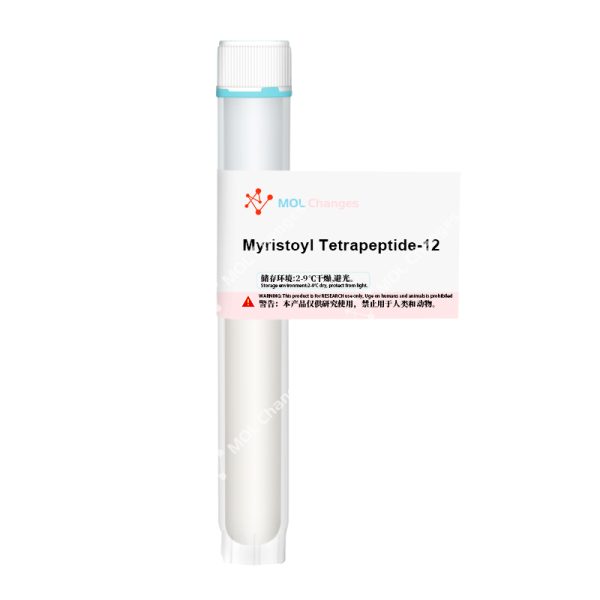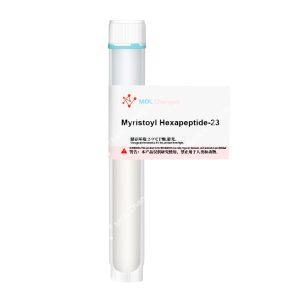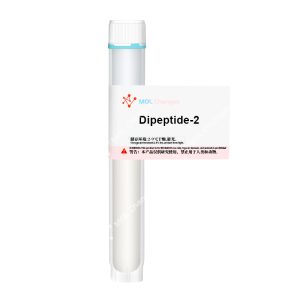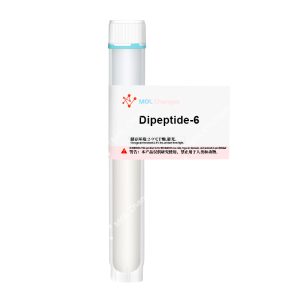Myristoyl Tetrapeptide-12 is a synthetic bioactive peptide formed by combining a myristoyl group with a precisely defined tetrapeptide sequence. The structural design of this peptide draws direct inspiration from the mechanism of myristoylation itself – a form of post-translational protein modification.
Enhanced cell membrane binding and subsequent signal transduction are key outcomes of this structural modification; lipophilicity and enhanced cell membrane permeability are also improved. More effective action upon skin and hair follicle cells is the desired end result.
Significant attention has been paid to its use in cosmetics and various forms of skincare, pronounced hair growth stimulation being the most studied effect.
Sequence
Myr-Lys-Ala-Lys-Ala-NH2
CAS Number
959610-24-3
Molecular Formula
C32H63N7O5
Molecular Weight
625.89 g/mol
Research Of Myristoyl Tetrapeptide-12
Myristoyl Tetrapeptide-12 falls under the category of synthetic lipopeptides; promotion of hair growth is the primary (and well-documented) potential efficacy being sought after.
The most established evidence regarding a mechanism of action points to its regulation of the Transforming growth factor (TGF-β)/Smad pathway. Cell proliferation, differentiation, apoptosis, tissue repair – all are at least partially controlled by this pathway, with the hair follicle cycle being no exception.
SMAD Signaling Pathway Activation: Regulating the aforementioned pathway is the core mechanism. TGF-β itself plays a near perfect role in all the previously mentioned processes.
Following treatment with the peptide, increases in phosphorylated SMAD2 (and to a large extent SMAD3) are observed. Direct DNA binding by SMAD3 is the final, concrete step in transcriptional regulation; enhanced binding capacity means altered (to some degree) downstream gene expression.
Activating SMAD2/3-DNA interaction is what the peptide appears to be doing – hair growth effects may be a direct result of this unique, or at least partially defined, mechanism.
Hair Follicle Stem Cell Regulation: Mimicking (or modulating) specific segments of the full TGF-β pathway, Tetrapeptide-12 and its end products are able to and do, in part, re-establish normal hair growth cycling.
The primary biological functions of Myristoyl Tetrapeptide-12 center on promoting hair growth and regulating cellular matrix metabolism.
Currently, its use is predominantly within cosmetic formulations; eyelash growth serums and various types of hair care products being the most well documented examples.
Preclinical studies have shown a significant enhancement of eyelash density, length, and thickness as a direct result of this peptide.
Formulations containing it (often in combination with other peptides, Myristoyl pentapeptide-17 being a prime example) activate hair follicle keratinocytes, local microcirculation being another positively affected outcome – improved ‘appearance’ of the lashes being the end result.
Anti-aging products also utilize this peptide, skin elasticity and small wrinkles being at least partially mitigated by its more general skin cell regulatory effects.
COA
HPLC
MS









Reviews
There are no reviews yet.